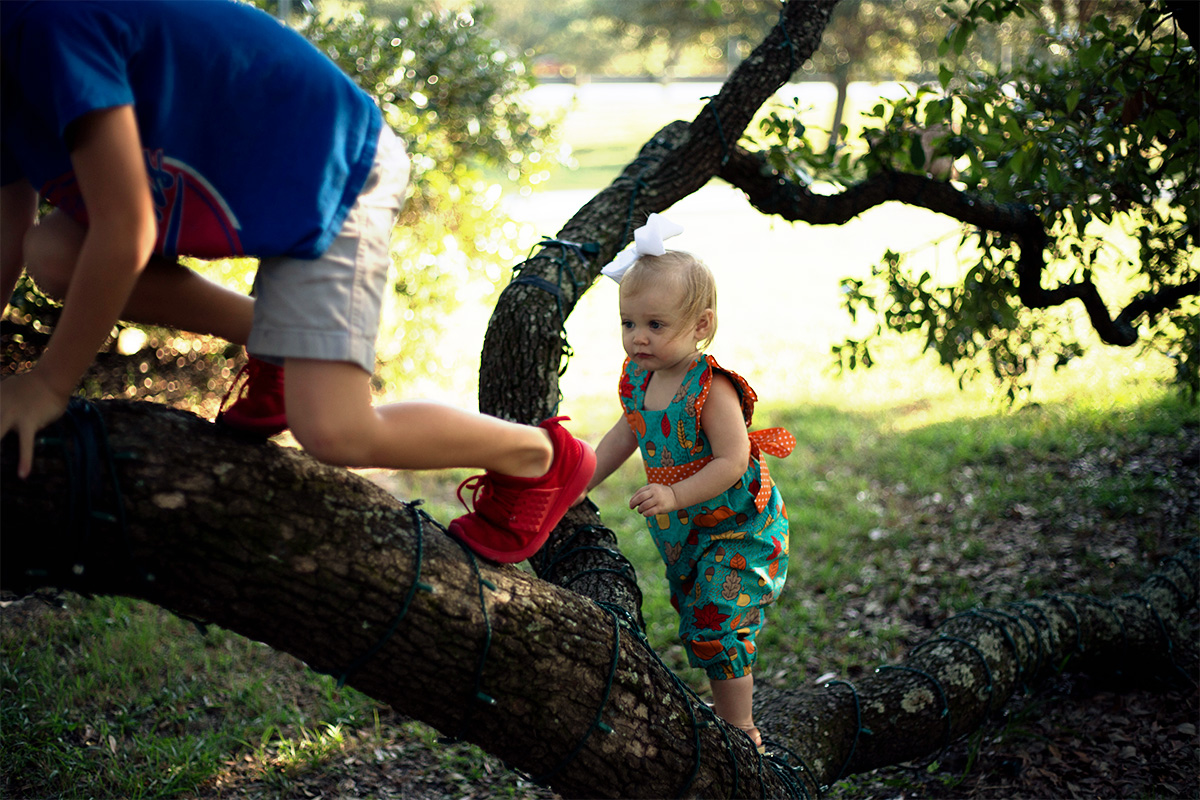
Risky Play is always a topic that comes up in our work with children: how do we allow risk without jeopardizing the safety of the children in our programs?
A few weeks ago we published a resource link on our website, titled, "The Image of the Educator." In this short article we talked about how the relationship between the Image of the Educator and the Image of the Child help us hold a healthy culture at our programs.
As adults (parents, educators, grandparents, etc.), how we view the child and their competency will determine how we allow them to move around their environment. Moreover, how we see our role and our relationship with the child will also determine how we work with children's movement around their environment.
The Competent Child is not a child who already knows everything; who has all the skills required to climb a tree or jump down a large rock. The child is instead an individual capable of assessing their own capabilities and a person ready to acquire all the skills required to do such task, only and only if the adult creates the opportunities and provide environments that allow for these skills to be practiced and learned.
Today, we are sharing a writing by one of our educators, Laura Burki, who navigates the benefits of taking risks for children.
‘Be Careful’ is a phrase that has become all too common in parent-child relationships. Of course we want our children to be safe, to not get hurt and ensure that the decisions that they are making are thought through, considered and well executed.
However we cripple children’s ability to self monitor and assess risk for themselves when we place that little seed of doubt in their mind that ‘careful’ is what they need to be.
There are many respected professionals in our world. People who are trying to help make a shift in the vocabulary we use when we guide and support children through situations that are fun,exciting, exhilarating and potentially a little dangerous and scary. After all, it is part of our role as adults to help children navigate their way through the challenges this world throws at them. We need to remember there are ways we can do this without wrapping them in bubble-wrap and removing all opportunities for them to ‘look out’ for themselves.
Most children are naturally great risk assessors. When given the opportunity, time and situation to be able to exercise this skill, they can use their senses to understand the situation they are in and make measured decisions to plan their response, next action or find a way out! We tend to stifle that innate ability when we stop them from taking risks in the first place. We remove all opportunity for risk, we instill exaggerated fear of a situation because we share our own ‘gut feelings’ with them before they have a chance to listen to their own internal warning signs. Risk permits children to push themselves to the limits of their capacities and encourages them to progress. Rising to challenges, embracing risks and taking an “I can do” attitude are important characteristics of effective learners.
Across the globe, there is a movement to replace the term ‘be careful’ with the question ‘Do you feel safe’ or even better still ‘how do you feel up there’. These two options remove our adult, on the ground judgement from the situation and allow the child to reflect and think about what their body is telling them about the situation they are in.
When given a range of opportunities for them to answer this question for themselves, they start to find ways to discern between the feeling of good risk and bad risk. They find their own balance between acceptable and not acceptable levels of fear, they learn to judge between exhilaration and danger.
Remember to allow your child and our children to play, be free, learn, grow and take the risk! They are smarter than you think.
